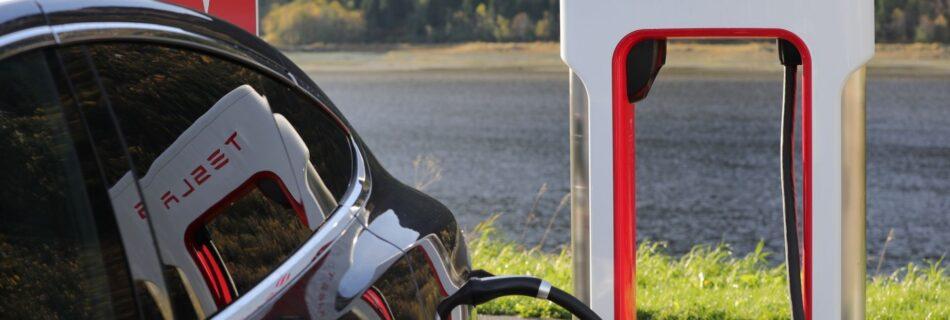Perubahan Iklim dan Dampaknya Terhadap Perempuan
Kita tahu bahwa perubahan iklim adalah suatu ancaman yang bisa memberikan dampak terhadap banyak orang bahkan seluruh masyarakat di muka bumi. Namun, tahukah kamu kalau besarnya dampak perubahan iklim yang dirasakan bisa berbeda bagi setiap individu? Perubahan iklim disebut-sebut memiliki potensi ancaman yang lebih besar terhadap kelompok rentan, dalam hal ini ialah perempuan dan anak-anak. Lebih dari itu, mereka yang tinggal di daerah dengan mitigasi krisis iklim lebih rendah punya dampak yang lebih tinggi lagi. Baca juga artikel lainnya : 5 Istilah Penting yang Berkaitan dengan Perubahan Iklim Menurut data yang dihimpun oleh Cambridge University Press yang dimuat dalam jurnal tahun 2022 berjudul ‘Facing Change: Gender and Climate Change Attitudes Worldwide’, ditemukan adanya nilai yang lebih tinggi yang menunjukkan bahwa wanita, secara rata-rata, terdampak perubahan iklim lebih serius dibandingkan pria. Selain itu, beberapa penelitian di berbagai negara juga menunjukkan adanya kesenjangan gender dalam perhatian terhadap perubahan iklim. Umumnya menyasar perempuan dan anak-anak sebagai kelompok yang rentan dalam hal ini. United Nations Development Program (UNDP) menyebut bahwa dampak perubahan iklim berpotensi melanggengkan dan memperbesar ketimpangan struktural yang ada. Berdampak lebih besar pada perempuan. Lalu, bagaimana perubahan iklim bisa berdampak terhadap perempuan dan menjadikannya sebagai kelompok rentan yang patut dilindungi? 1. Dampak Krisis Air yang Membebani Perempuan Di banyak negara berkembang, perempuan menjadi individu yang bertanggung jawab besar atas pengambilan air untuk rumah tangga. Hal tersebut dibuktikan oleh data UNICEF, salah satu badan PBB, yang menyebut bahwa perempuan dan anak perempuan punya andil hingga 80 persen melakukan pengambilan air untuk memenuhi kebutuhan rumah tangga mereka. Sayangnya, dampak perubahan iklim yang menimbulkan kekeringan sampai dengan kelangkaan air, membuat perempuan harus bekerja lebih ekstra dengan berjalan lebih jauh demi mencari dan mendapatkan sumber air. Kondisi ini membuat beban kerja mereka bertambah, yang efeknya menyisakan lebih sedikit waktu bagi mereka untuk mengejar pendidikan atau melakukan kegiatan lain yang dapat menghasilkan pemasukan. Air bersih menjadi salah satu kebutuhan penting manusia yang jika tidak terpenuhi, berpotensi menimbulkan kerugian baik jangka pendek maupun jangka panjang. 2. Ancaman terhadap Kebebasan dan Hak-Hak Perempuan Tidak dapat dipungkiri bahwa perubahan iklim dapat memberikan ancaman terhadap kebebasan dan hak-hak yang dimiliki perempuan. Contohnya seperti kebebasan perempuan dalam mengakses pendidikan dan serta bekerja yang dipengaruhi oleh peranannya dalam mendukung rumah tangga. Perempuan seringkali menjadi pihak yang diberikan tanggung jawab mengurus rumah tangga dan keluarga. Akibat perubahan iklim, beban kerja mereka pun bisa jadi meningkat yang membatasi mereka ke akses lain yang dibutuhkan. Perempuan juga punya kerentanan yang tinggi terhadap masalah kesehatan akibat perubahan iklim, melalui ancaman seperti kerawanan pangan, dampak gelombang panas, banjir, polusi udara dan lingkungan, serta hal lainnya. Kondisi ini dapat menimbulkan cedera atau kematian bagi para perempuan, ibu hamil, hingga bayi. Juga menyebabkan penyebaran penyakit karena kontaminasi akibat sanitasi dan kebersihan lingkungan yang buruk 3. Risiko Kekerasan terhadap Perempuan Saat sumber daya semakin langka (misalnya air dan makanan), konflik sosial meningkat. Ini bisa memperburuk kekerasan berbasis gender, termasuk dalam rumah tangga dan pengungsian akibat iklim. Dengan kondisi geografis yang buruk yang menyebabkan perempuan harus berjalan lebih jauh mencari sumber daya, perempuan berisiko menghadapi situasi kekerasan dari pihak lain yang memperburuk ketidaksetaraan gender. 4. Gangguan pada Pertanian dan Ekonomi Perempuan Di berbagai negara, ada banyak perempuan yang menjadikan sektor pertanian sebagai sumber mata pencaharian utama mereka. Sayangnya, perubahan iklim yang meningkatkan potensi cuaca ekstrem dapat berdampak negatif terhadap hasil panen, menurunkan pendapatan, hingga menciptakan kerawanan pangan bagi perempuan dan keluarga. Perubahan pola hujan dan kekeringan mengancam produksi pangan, membuat mereka kehilangan pendapatan dan meningkatkan kerentanan ekonomi. 5. Representasi Perempuan dalam Pengambilan Keputusan Rendah Di berbagai kesempatan, kita masih sering melihat bahwa jumlah perempuan yang terlibat dalam proses pembuatan kebijakan, terutama terkait perubahan iklim dan lingkungan, masih jauh lebih sedikit dibanding laki-laki. Sayangnya, kondisi ini berdampak pada bagaimana kebijakan dibuat, karena perspektif dan kebutuhan perempuan sering kurang diperhitungkan. Kebijakan iklim yang dibuat tanpa mempertimbangkan perspektif perempuan bisa kurang efektif karena tidak memasukkan kebutuhan kelompok yang paling terdampak. Padahal, perempuan memiliki cara pandang berbeda dalam mengelola sumber daya dan cenderung lebih mendukung kebijakan yang berorientasi pada keberlanjutan. Di antara lima dampak di atas, tentu dibutuhkan solusi yang dapat mengutamakan gender dalam kebijakan iklim, meningkatkan akses perempuan ke pendidikan, ekonomi, dan pengambilan keputusan lingkungan. Tentang Satuplatform Satuplatform merupakan platform all-in-one yang menyediakan solusi komprehensif untuk ESG management, carbon accounting, dan sustainability reporting. Kami dapat membantu Anda mencapai tujuan keberlanjutan dengan menjadi yang terdepan sesuai regulasi yang berlaku. Dengan fitur-fitur Satuplatform, Anda dapat: Mengumpulkan dan menganalisis data ESG secara akurat dan efisien Melacak emisi karbon dan menetapkan target pengurangan emisi Menyusun laporan ESG yang memenuhi standar internasional dan nasional Satuplatform juga didukung oleh tim ahli yang berpengalaman di bidang keberlanjutan bisnis. Tim ahli kami akan membantu memahami kebutuhan Anda dan mengimplementasikan solusi yang tepat. Hubungi Satuplatform dan dapatkan FREE DEMO sekarang! Wujudkan bisnis yang berkelanjutan, berdaya saing, dan bertanggung jawab bersama Satuplatform. Similar Article How Indonesian Businesses Are Aligning with SDGs for a Sustainable Future Maintaining sustainable economic growth while minimizing the environmental impact has become a critical challenge for Indonesia. As one of the world’s fastest-growing economies and a nation rich in natural resources, the balance of economy and environmental stability is a big concern. Looking towards global movement, Indonesia is following the Sustainable Development Goals (SDGs) by the United Nation as the roadmap for balancing economic progress with environmental stewardship. Nowadays, businesses in Indonesia are increasingly aligning their strategies with SDGs to foster long-term sustainability, with a focus on green growth as an economic model that promotes environmental responsibility while ensuring profitability. Businesses… Blue Economy in Indonesia: Business Innovations for SDG 14 (Life Below Water) As the world’s largest archipelagic nation, Indonesia is home to more than 17,000 islands and an exclusive economic zone (EEZ) spanning 6.4 million square kilometers. The ocean plays a crucial role in the country’s economy, supporting fisheries, tourism, and maritime trade. However, currently the health of Indonesia’s marine ecosystems is under threat due to overfishing, plastic pollution, and climate change. In this situation, the Blue Economy emerges. The term “Blue Economy” refers to an economic approach that …
Read more “Perubahan Iklim dan Dampaknya Terhadap Perempuan”











